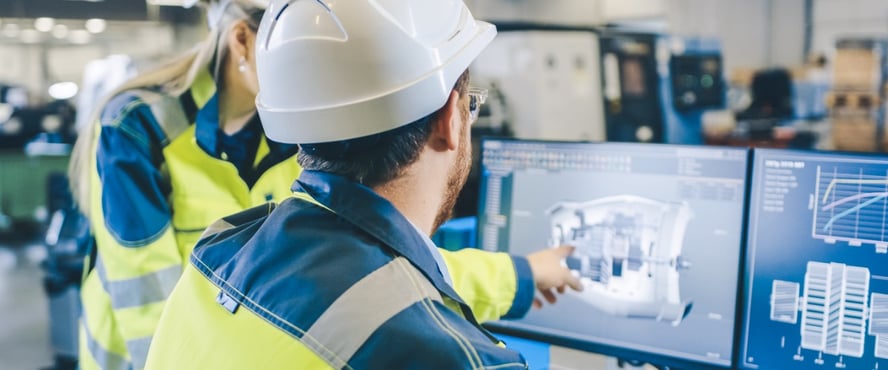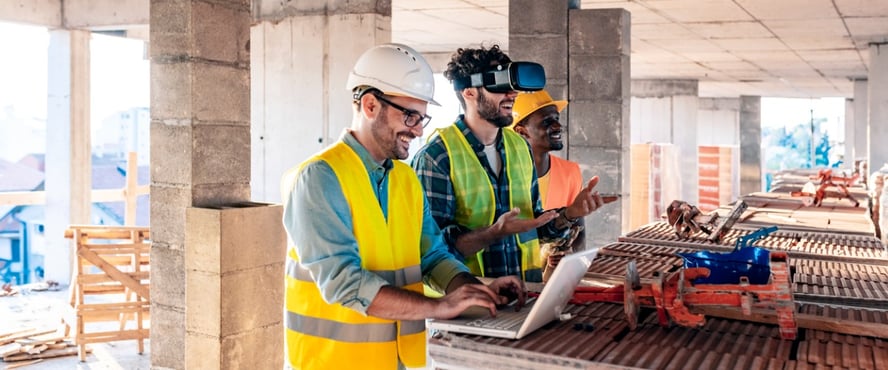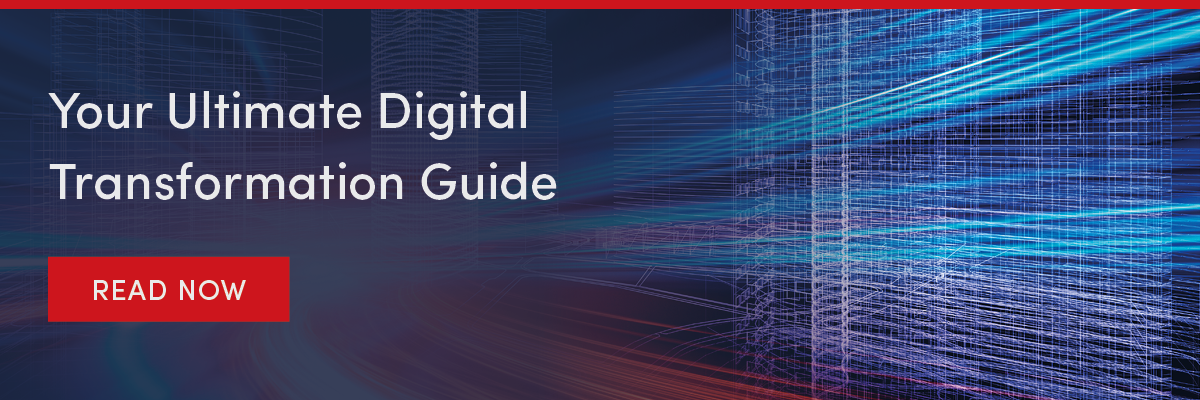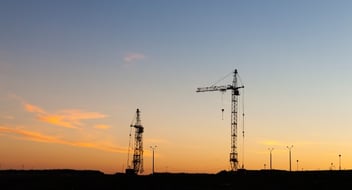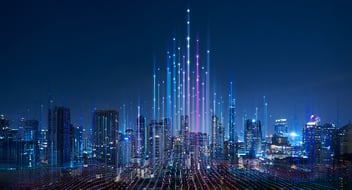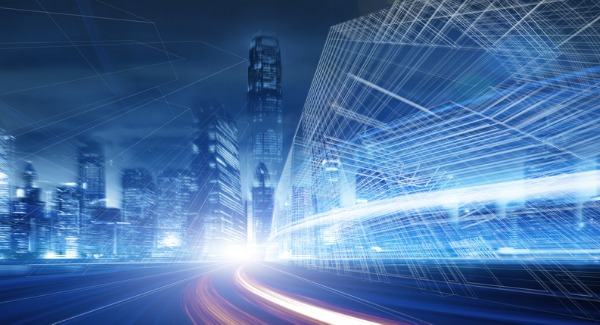
This blog was published in conjunction with RICS World Built Environment Forum.
Evolution 4.0 is a monthly column looking at the defining trends and practices of the fourth industrial revolution. In this article, WBEF Tech Premier Partners Asite consider digitalization, decarbonization, and deadline 2050.
Overall, I think it’s fair to say that we are making progress on sustainability issues. Environmental action seems to have reached something like a critical mass. It is remarkable that the world’s most famous teenager is not a pop star or athlete, as has been the case in previous generations, but a climate activist—Greta Thunberg. Nonetheless, the public discussion remains maddeningly blighted by misinformation, misgiving, and misunderstanding. Perhaps one example of this is the lingering confusion around decarbonization timeframes. 2050 is often presented as a target date, the desired endpoint of our journey towards total energy transition. This is wrong. 2050 is a deadline and a strict one at that. We will get no extensions if we fail to deliver on schedule.
Of course, the built environment will be key to our prospects. By now, you will be very familiar with the sector’s outsized contribution to global emissions counts. But the nature of the challenge varies across the developed and developing world. Most estimations suggest that India will become the world’s most populous nation somewhere around the mid-point of this decade. Accordingly, the country is building rapidly so as to meet demand: roughly 75% of the buildings required by 2030 to accommodate the booming population do not yet exist. Servicing this need will undoubtedly be a huge undertaking, but it presents an equally huge opportunity. If managed wisely, with newfound industry knowledge on sustainability guiding the process, India can avoid the kind of carbon lock-in that poses such difficulty in legacy building stock elsewhere.
Indeed, it is this legacy stock that makes the decarbonization puzzle so devilishly complex. In the developed world, where population numbers are relatively stable and the need to build is consequently less acute, today’s houses and offices will be tomorrow’s houses and offices. So says the Institute of Engineering and Technology, which projects that 80% of buildings currently in use will still be in use by 2050’s decarbonization deadline day. By and large, these buildings—cherished homes and valued workplaces—pre-date modern green building standards. Quite simply, we cannot live without them. Equally, we cannot live with them in their current energy-profligate form.
"The Institute of Engineering and Technology projects that 80% of buildings currently in use will still be in use by the 2050 decarbonization deadline."
Across the world, governments and legislators are moving to address the problem. The EU’s Renovation Wave, arguably the world-leading initiative in the field, has set a target of 35,000,000 energy-friendly refurbishments by 2030 across the 27-nation bloc. Such progressive policy responses, while encouraging, are not magic bullets. They are the foundations from which actions spring; the starring actors will inevitably be construction and real estate professionals.
One step that we must take as a group is to shed our long-held reluctance to embrace digitization. For years now, various indices have ranked construction among the world’s least tech-enabled sectors. This persistent reality, which amounts to something like an industry-collective neophobia, inhibits us in manifold ways, depressing productivity, increasing costs, and leaving us wide open to disruption. Moreover, we cannot climate-proof our built environment without the helping hand of tech—I am talking here, chiefly, about digital twins.
You are likely familiar with the concept: digital twins are the virtual replication of objects, beings, systems, or environments. The UK’s Institution of Civil Engineers believes they will be key to our net zero ambitions. A digital twin of a building essentially allows owners and operators to travel forward in time to assess how and where inefficiencies are likely to crop up. Across asset portfolios, this gives owners the power to prioritize retrofit works according to urgency of need. And at the individual building level, operators can undertake predictive maintenance works, effectively addressing problems before they occur. According to some analyses, this type of proactive approach can reduce energy use by 20%. The end result is a more resilient building and/or portfolio of buildings. Digital twins can even be networked, streamlining access to pertinent information across whole ecosystems, be they neighborhoods, cities, or nations. What’s more, through the integration of material passports, they can drive the much-needed switch from linear to circular economy.
Material passports are a comprehensive catalog of the materials used in a given building and a record of their reuse and recycling potential. Creating value through recovery and reuse is a key part of the retrofit process. Networked digital twins talk to each other about a range of topics, including reusable materials availability and need. In doing so, they create commercial opportunities for building operators; moreover, they can ease the intense industry demand for newly extracted resources. Materials recycling, while preferable to most alternatives, and certainly, no bad thing, is more carbon-intensive than reuse. To achieve a truly circular economy, we must prioritize reuse where it is possible; in this pursuit, digital twins are among the most potent weapons at our disposal.
"Recycling is more carbon-intensive than reuse. To achieve a truly circular economy, we must prioritize reuse where it is possible."
None of this is science fiction; it is practicable reality. When you strip away the terminologies, some of which, admittedly, feel as though they were borrowed from Star Trek, what we’re really talking about is good old-fashioned information sharing. The technology does not promise to reinvent the wheel, only to optimize processes in desperate need of optimization.
Ultimately, this will all boil down to behaviors—old and new. The old approaches, timeworn and flawed, in which we were jealous and proprietary with our data, contributed massively to our current predicament. What I, and those who share my passion, am proposing is a new approach. As an industry, we must be connected and collaborative, and work with purpose towards mutually beneficial outcomes. If we can do that, we may yet drag our planet back from the brink.
Want to learn more about how digital twins can help us reduce the Built Environment's carbon output? Download our free ‘Smart Retrofitting’ report here.
Nathan Doughty
CEO at Asite
4 minute read
Asite Insights in your inbox.
Sign up for product news and our latest insights published monthly. It's a newsletter so hot, even global warming can't keep up.

